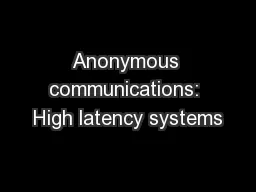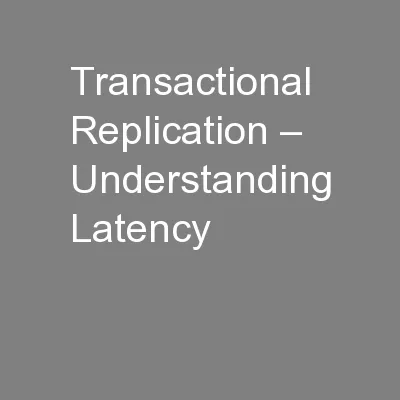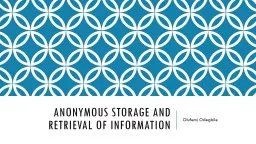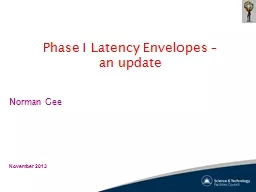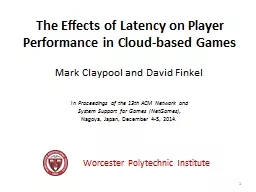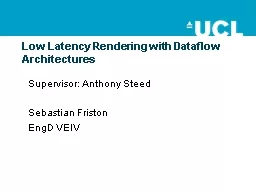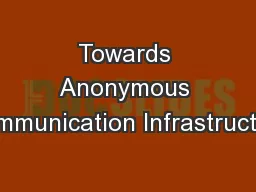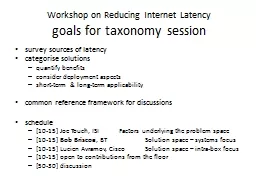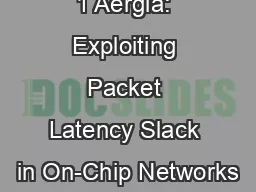PPT-Anonymous communications: High latency systems
Author : min-jolicoeur | Published Date : 2015-10-18
Anonymous email and messaging and their traffic analysis Network identity today Networking Relation between identity and efficient routing Identifiers MAC IP email
Presentation Embed Code
Download Presentation
Download Presentation The PPT/PDF document "Anonymous communications: High latency s..." is the property of its rightful owner. Permission is granted to download and print the materials on this website for personal, non-commercial use only, and to display it on your personal computer provided you do not modify the materials and that you retain all copyright notices contained in the materials. By downloading content from our website, you accept the terms of this agreement.
Anonymous communications: High latency systems: Transcript
Download Rules Of Document
"Anonymous communications: High latency systems"The content belongs to its owner. You may download and print it for personal use, without modification, and keep all copyright notices. By downloading, you agree to these terms.
Related Documents

